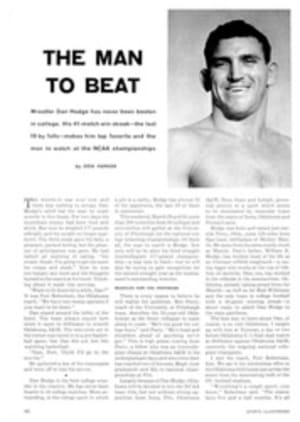
Swanky Swamp
The boardwalk on the opposite page may look superficially as though it were going across a cabbage field into nowhere, but do not be deceived. This structure leads into a world which hitherto has been closed to most men—the wonderful and slowly disappearing world of a Florida cypress swamp.
A big cypress swamp is a place of beauty, solitude and mystery. Its great trees with waving pendants of gray moss create a shadowy atmosphere that is restful. At the same time, the swamp is a busy place, sometimes even noisy, with comings and goings of its wild denizens. There is more wildlife in a swamp than almost any other habitat.
All these things are normally denied to most people for two reasons: all but a few big cypress forests have been cut for lumber; and a trip into such of the swamps that are left means rough, dangerous going.
But now visitors to southwest Florida are penetrating one of the last remaining mature cypress swamps without even getting their feet wet. They are doing this through the courtesy of a group ranging from wealthy philanthropists to local residents who gave their money so that the swamp in which they once hunted could be preserved. Located 25 miles southeast of Fort Myers near the small town of Immokalee, it is called the Corkscrew Swamp Sanctuary, and it is owned and administered by the National Audubon Society. The Lee Tidewater Cypress Company gave the original tract of land; it has now grown to 5,760 acres.
Into this swamp the society has built a boardwalk more than half a mile long (3,555 feet as of last week). It is a sturdy walk with railings on both sides and occasional lookout points with benches. Here visitors from all over the country stroll along leisurely, taking in sights they have never seen before. Towering above them are the cypress trees, 800 or more years old. Samples of the rich Florida bird life fly over their heads, roost in the trees or wade the brown swamp water. Alligators which have become accustomed to boardwalk strollers sprawl on logs.
There are two features of this swamp which hold special interest for most visitors. It is a favorite nesting place of the wood ibis, the only true stork inhabiting the United States. Thousands of them nest in the tops of the cypress trees. It is also a great place for wild orchids, which bloom from April through June. There are at least 10 species of epiphytic orchids which are most abundant in the custard apple ponds, where they festoon the tree limbs like hanging gardens. Terrestrial orchids are found in wet prairies bordering the swamp and along the edges of cypress heads.
Within this tract, the big trees curve for five miles in a huge horseshoe. The curving belt of big trees varies from 400 yards to three-quarters of a mile wide.
As one of the early visitors to the sanctuary, I joined Henry P. (Hank) Bennett, the Audubon Society warden, and Sam Whidden, who has lived all his life at the edge of the swamp, for a survey trip. We met in the shade of a chikee, a palm-thatched Seminole Indian shelter, which had been built by Sam. From the chikee the boardwalk stretched across a prairie and disappeared into the swamp.
We crossed the prairie and slowed our pace as we entered the forest of smaller trees bordering the swamp. Air plants and orchids grew on the trees all about us. Hank pointed out items of interest, such as the ghost orchid which has no leaves and the various species of birds. Some notes taken during this late afternoon walk will give an idea of the abundance of wildlife in the swamp:
"Cypress trees tower up to 150 feet. American egrets making an awful racket. Boardwalk enters lettuce lakes-openings in swamp covered with water lettuce. Wood ibis flying back and forth almost constantly. White ibis feeding in slough and flying a third of a mile to where they're nesting. Several wood ibis stop and pose on dead tree, looking like Japanese print. Limpkins squalling deep in swamp. Spanish moss streamers wave in faint breeze. Flocks of redwing blackbirds pass overhead. Snowy egrets fly over in close formation on way to roost. Great blue heron calling in distance sounds like somebody being murdered. Fish crows fly over. More white ibis sail over our heads. American egrets quit feeding and fly over lettuce lakes. Alligators lying motionless on logs. Sam says one is Old Rusty. All look alike to me. Gars splash in brown water. Pileated woodpecker whams at tree. Wood duck flies right in front of us. Green frog calls. Florida gallinule sails in, lights on piece of water lettuce and skids like a bird on water skis; anhinga (water turkey) sits on limb with wings outspread. Dusk gathering now. In distance sandhill cranes set up rolling call. Night herons becoming active. Darkness thickens. Screams, squalls and splashes sound from swamp."
As we sat there in the gloom listening to the swamp sounds around us, Sam, the old swamp man, said: "There's some nice scenery in this swamp and its going to be here a long while now. It does your soul good just to sit and look."
PHOTO
DAVID GOODNOW
IN A WORLD OF GREEN AND GRAY, the boardwalk of Corkscrew Swamp stretches across a field of water lettuce, beneath moss-hung trees, opening a secret wilderness to tourist eyes.

